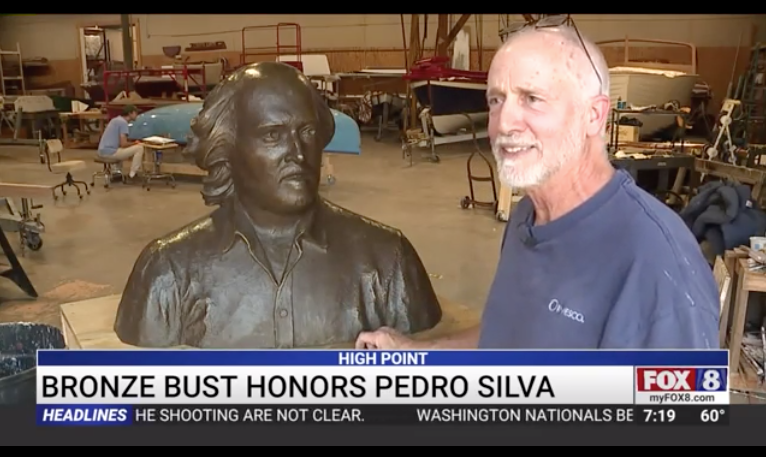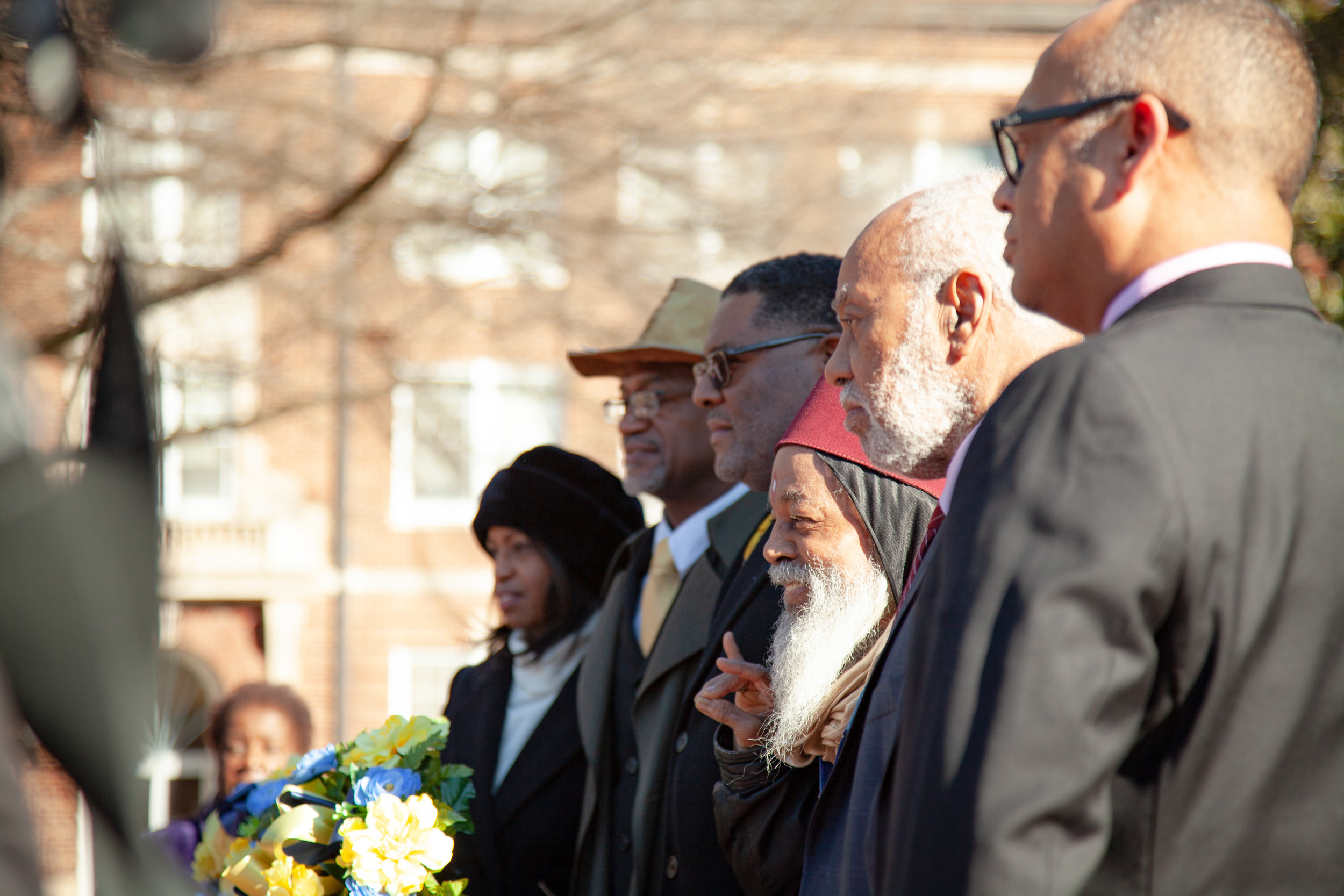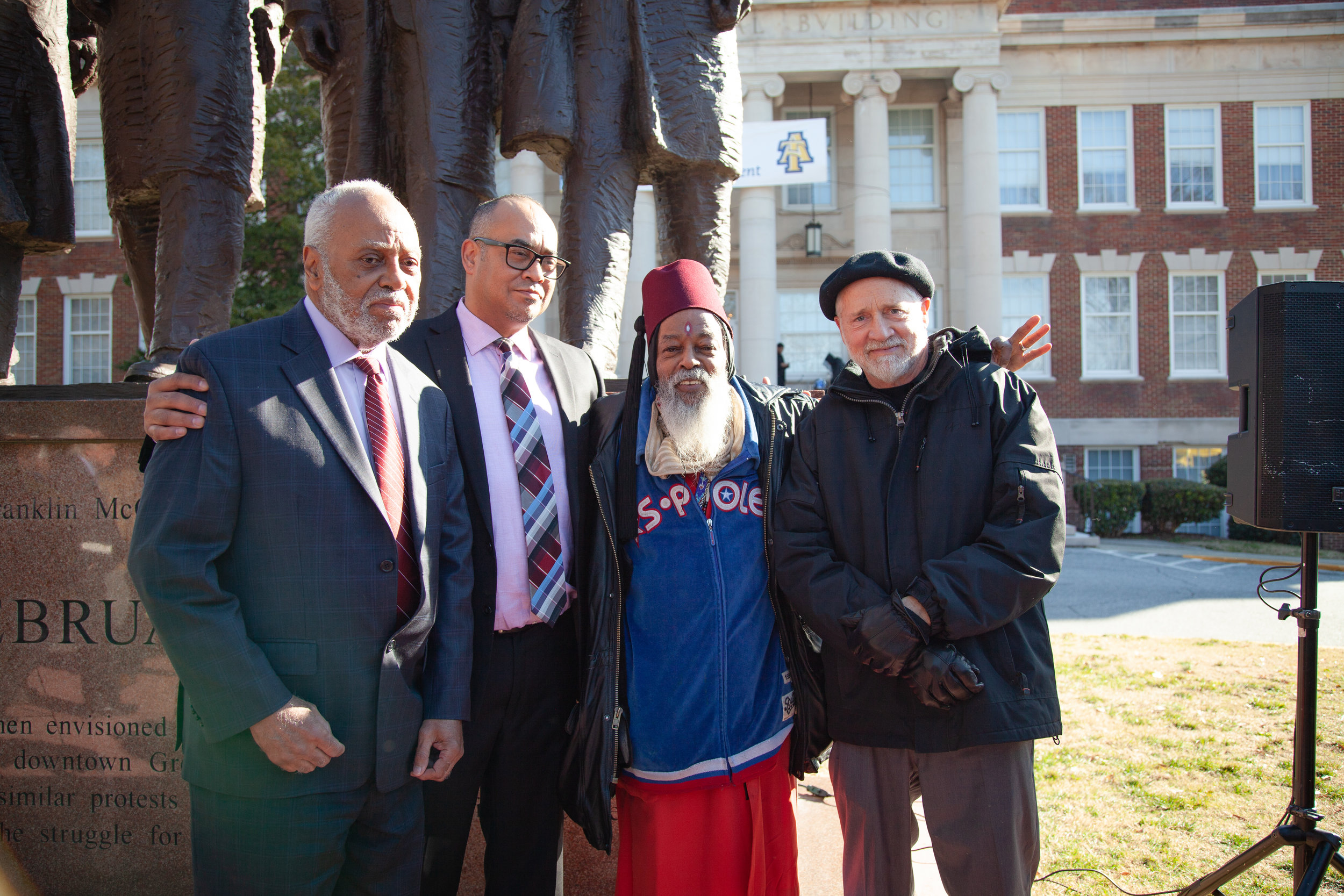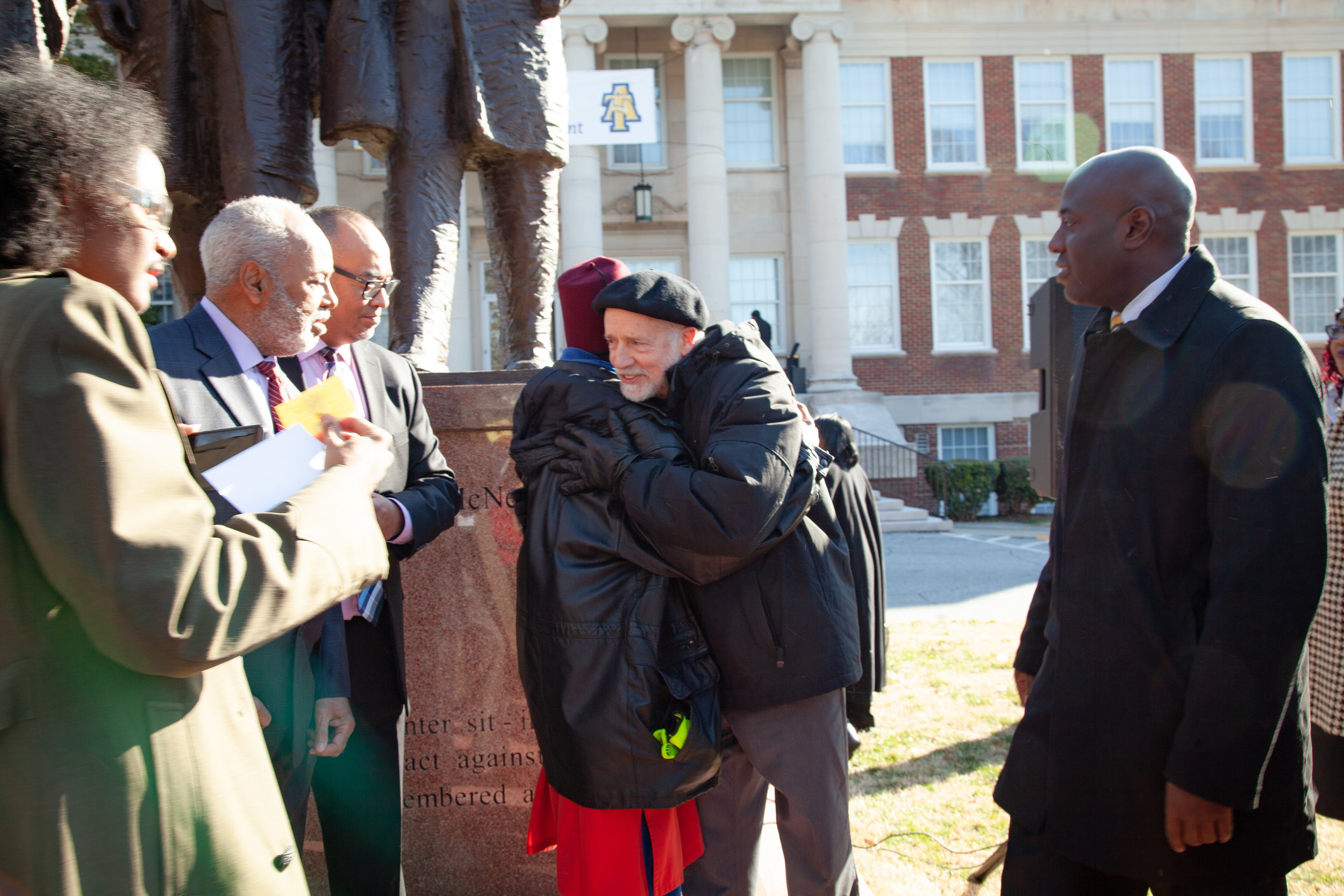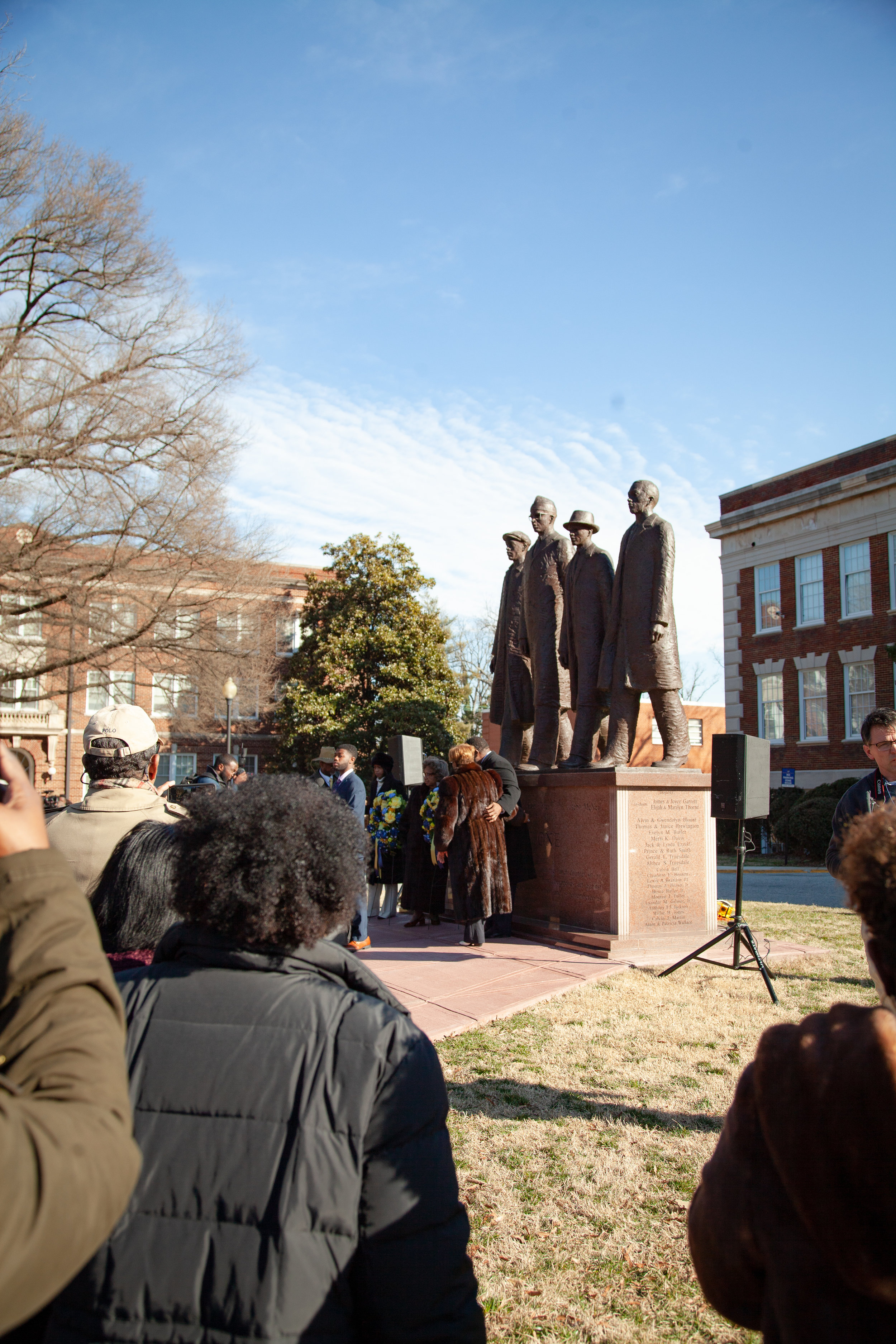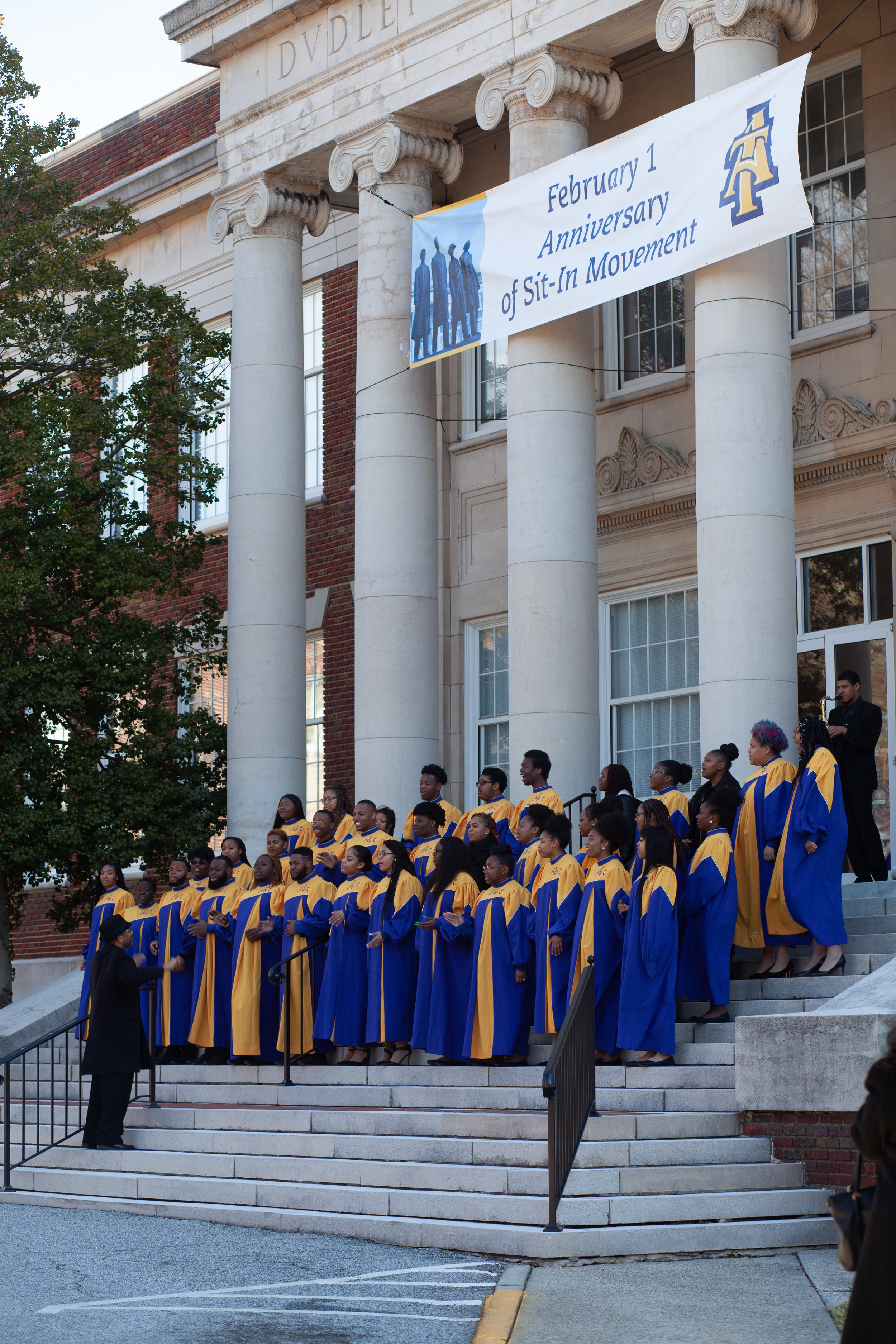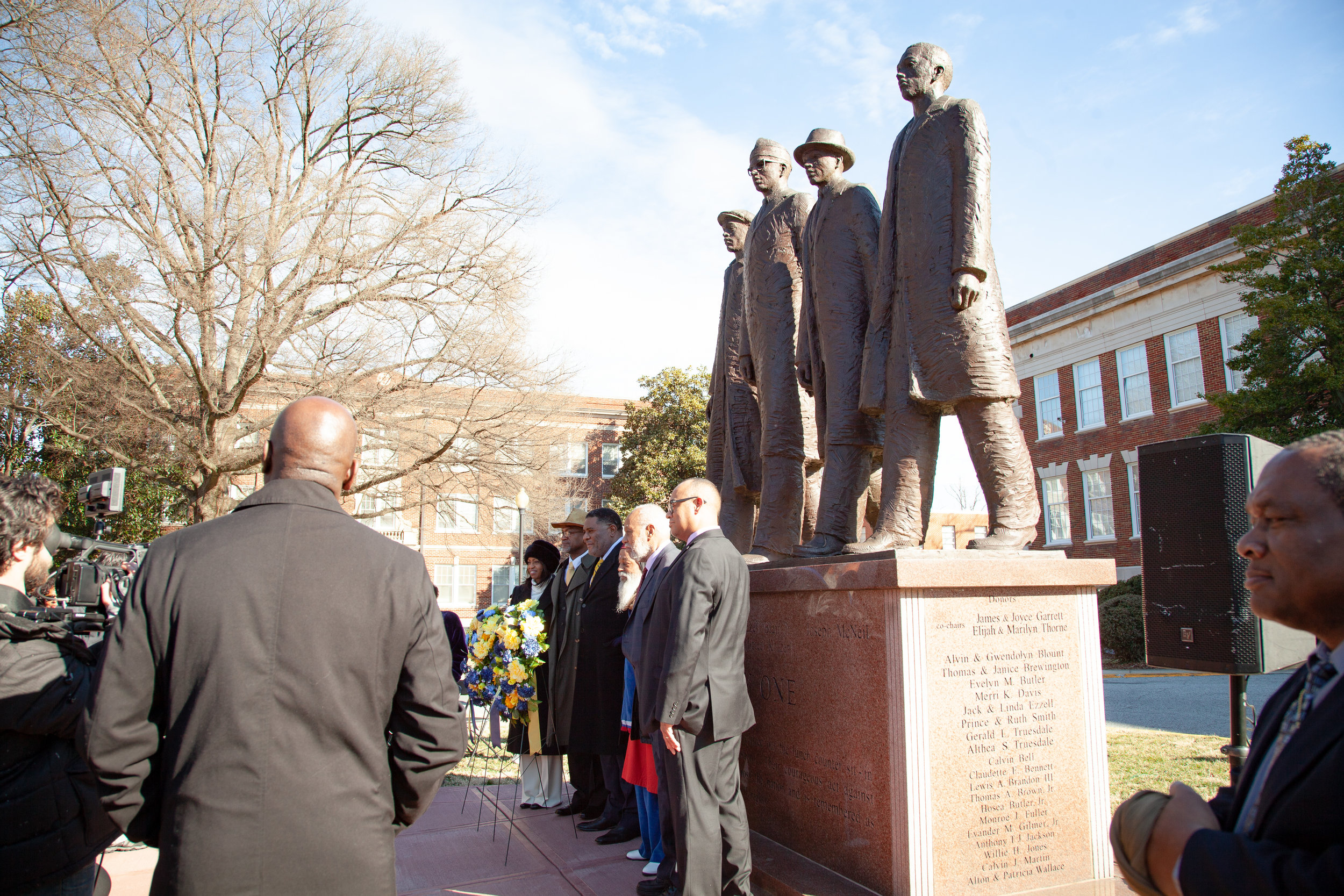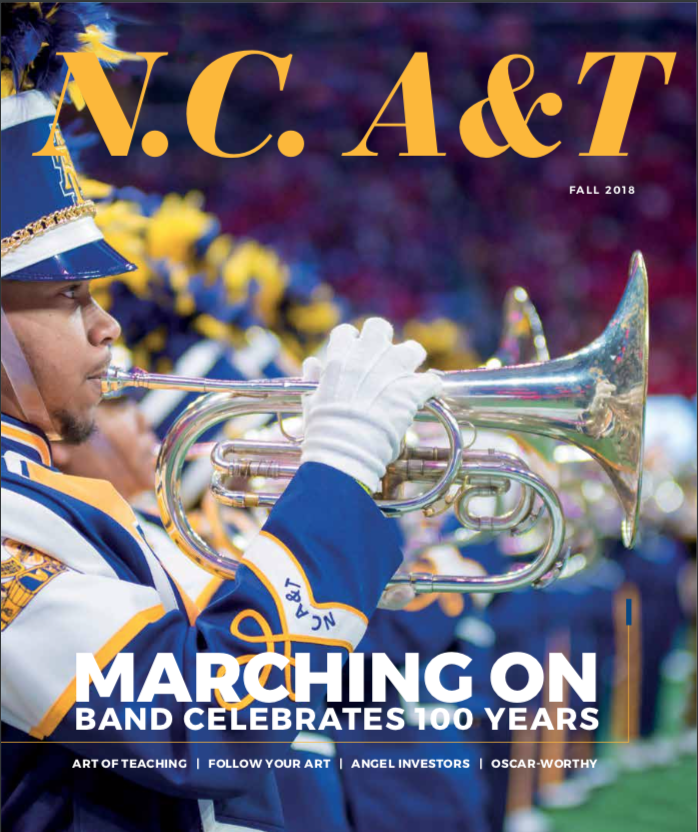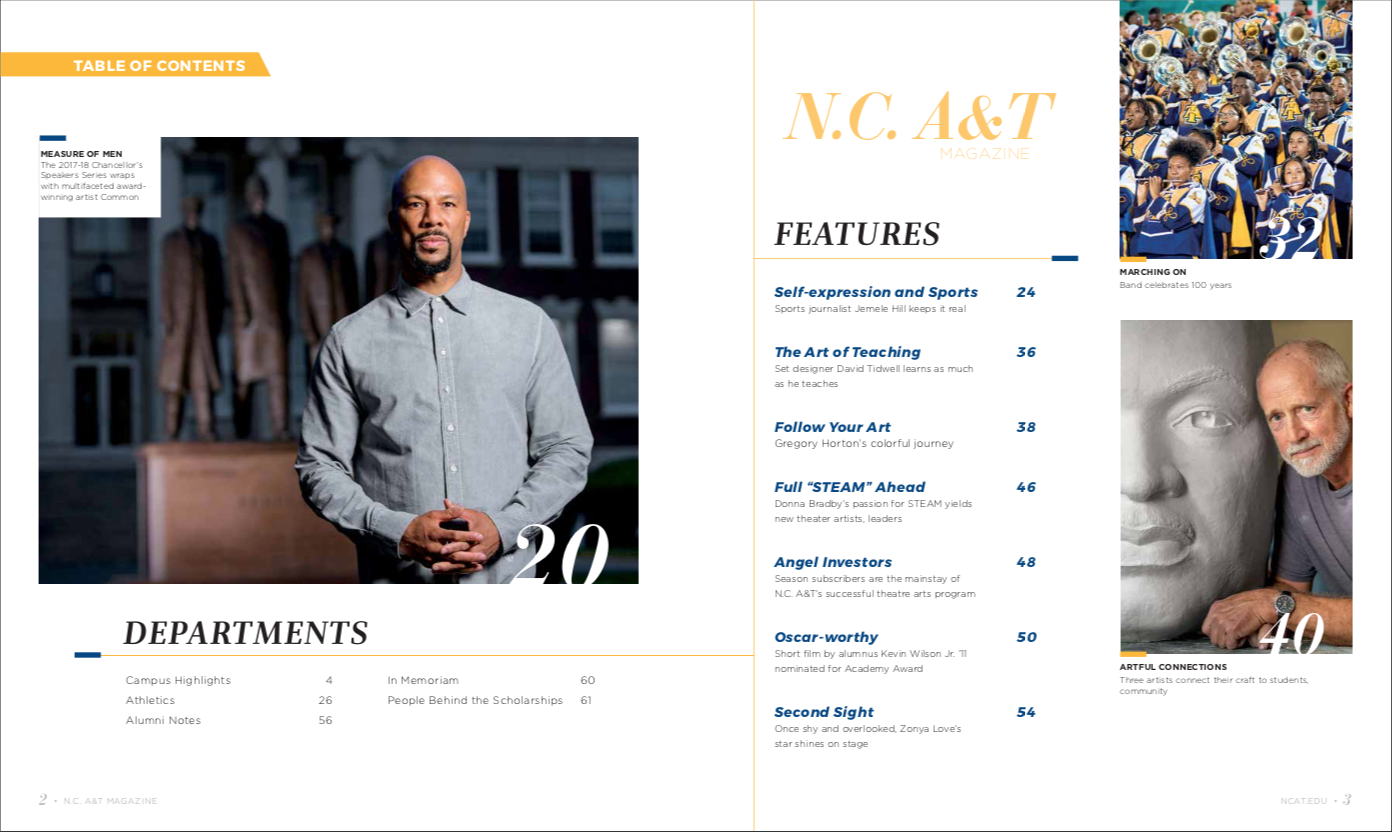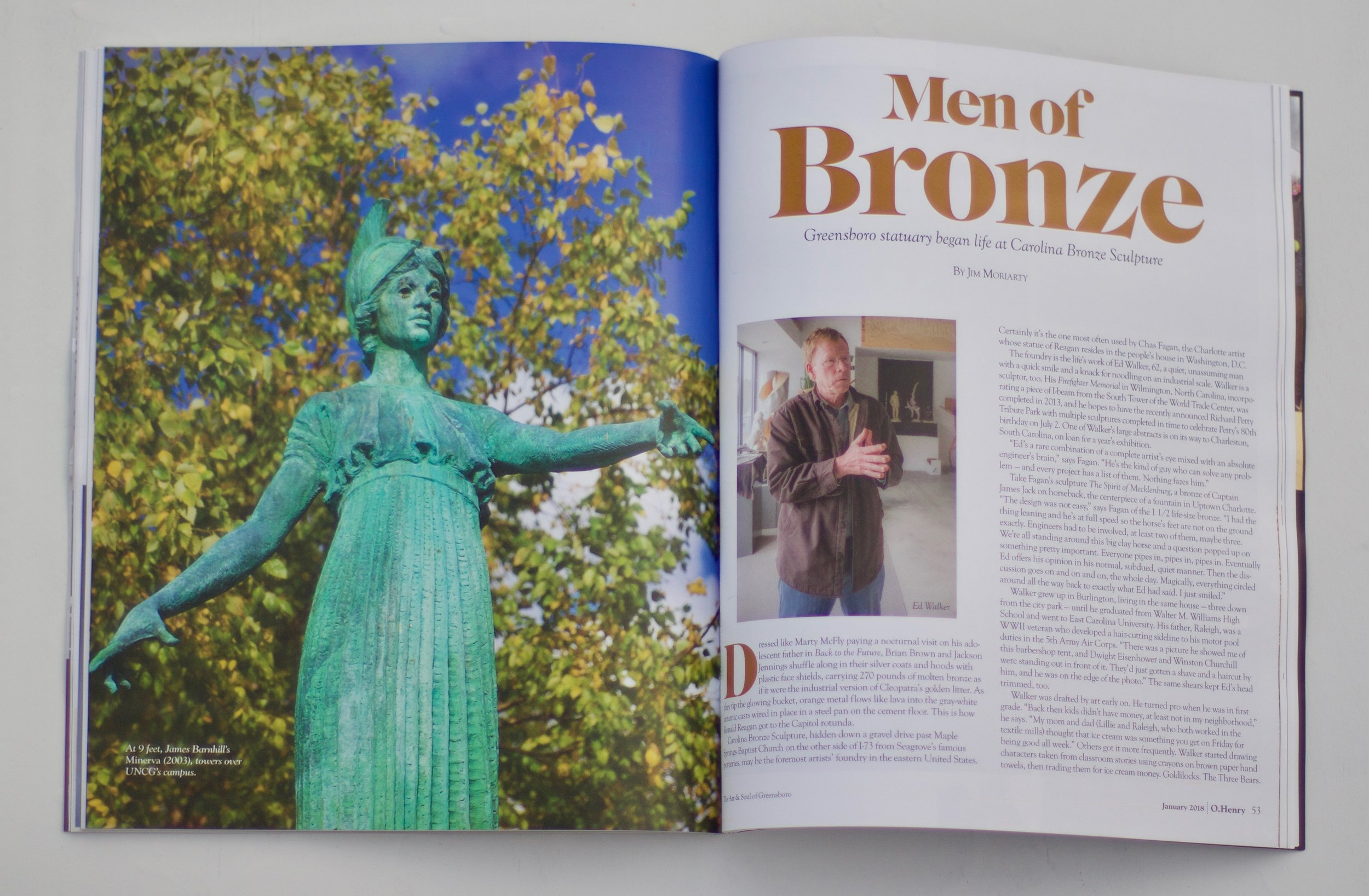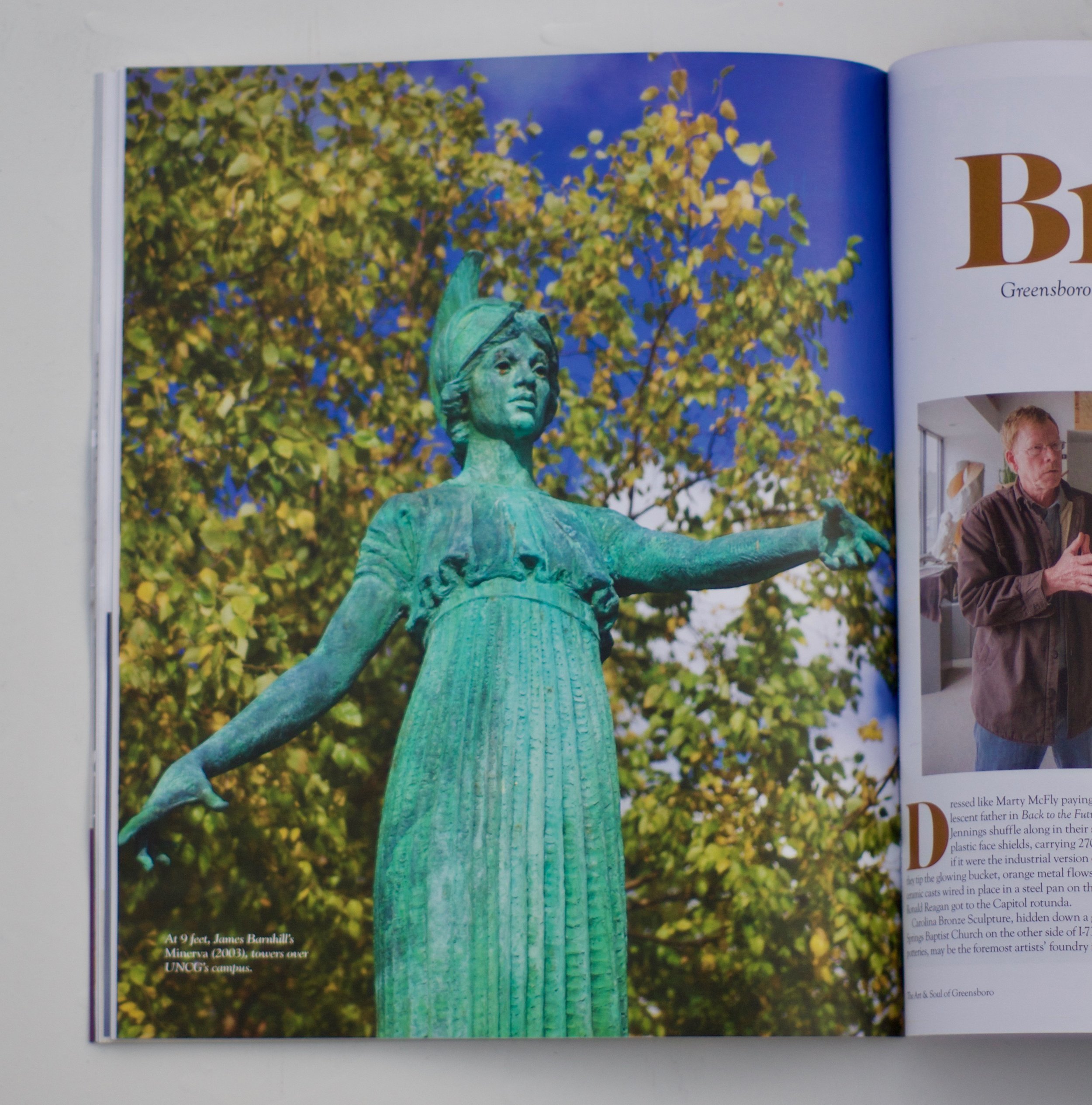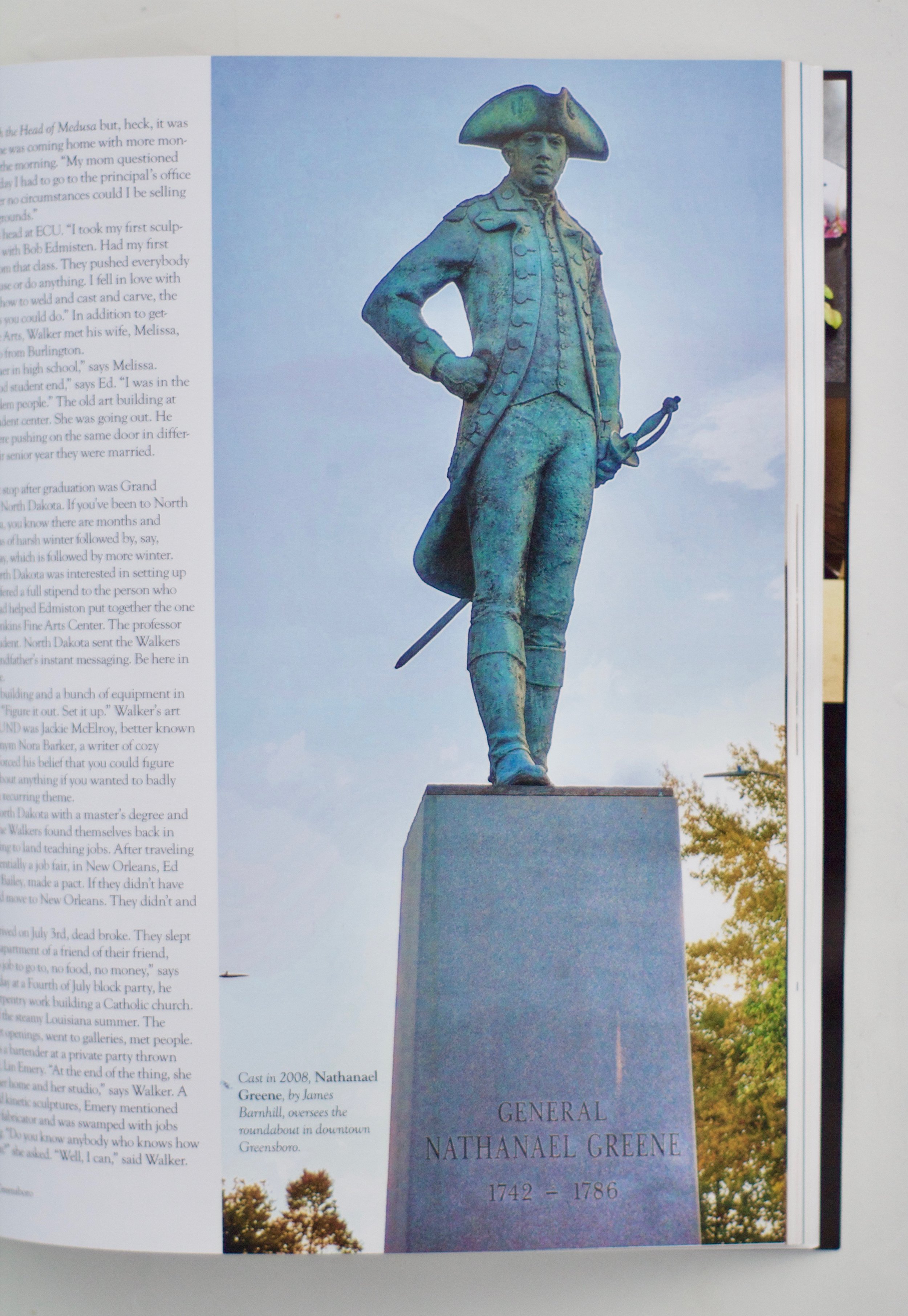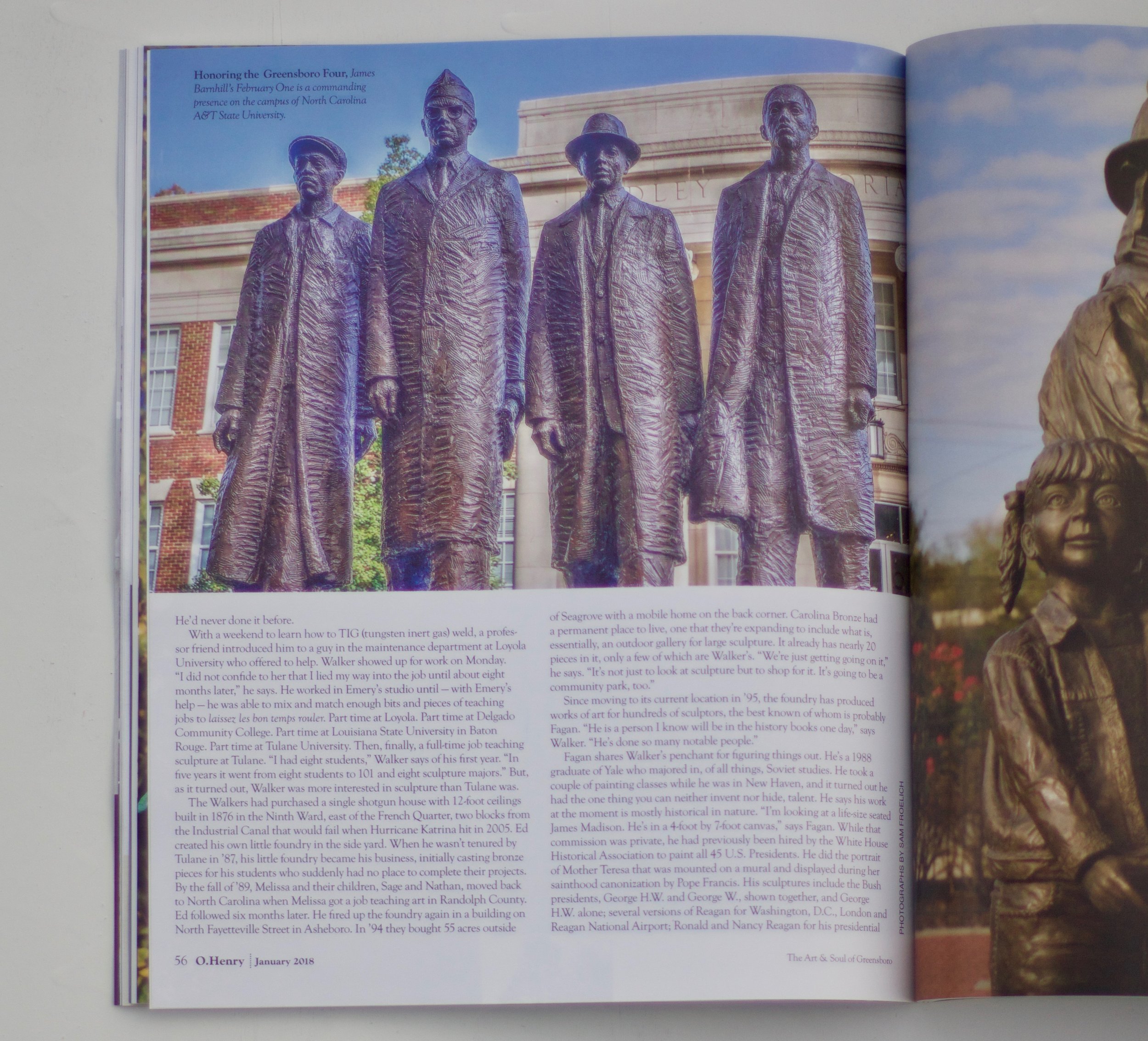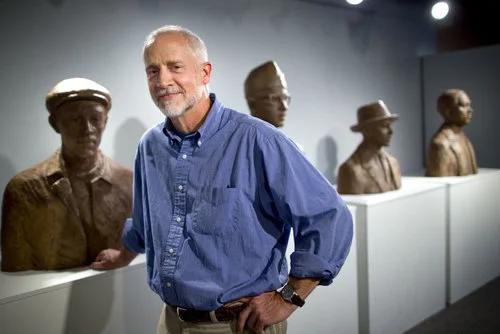By Jeri Rowe
Greensboro, NC
January 30, 2002
Thick-shouldered storm clouds hovered over U.S. 220 when Jim Barnhill pulled his white Chevrolet pickup into Seagrove’s Carolina Foundry. He came for another visit, to see one more time the four bronze figures caught in mid-stride toward making history.
When he turned the corner, two workers were welding the base. Barnhill smiled and stopped, watching the sparks fly. He walked slowly toward the 10-foot sculpture he had carved, looked up and squinted.
Beside his sculpture, he seemed so small.
“I think it’s going to be okay,” said Barnhill, not taking his eyes off the largest sculpture he’s created. “I did get pretty nervous when all of this was coming to a head. I knew everyone was going to see it. You know, I felt naked, exposed, and I kept thinking, ‘Am I worth my salt?”
Barnhill will find out Friday. He’ll say a few words and unveil on the N.C. A&T campus a sculpture that depicts one of the most important moments in American history, especially for African-Americans. His sculpture captures Feb. 1, 1960. It shows four young students from A&T – Ezell Blair, Frank McCain, Joseph McNeil and David Richmond — walking shoulder to shoulder after they staged a sit-in at Woolworth’s, asking to be served, spurning the whites-only, lunch counter etiquette. Their act spurred sit-ins nationwide and became what Martin Luther King Jr. called the “turning point” in the country’s second revolution, the civil rights movement.
A big project. Barnhill, an assistant professor of art at A&T, knew it. A year ago, A&T Chancellor James Renick picked Barnhill to tackle this project after he had seen his work. He told Barnhill, “When I find somebody with talent, I turn them loose on a project.”
Barnhill found an old photograph from the Greensboro Record that showed the four students leaving Woolworth’s Feb. 1, 1960. He blew up portraits of Blair, McCain, McNeil and Richmond from that photograph, laminated them and turned the basement of A&T’s Dudley Building with its 14-foot ceilings into a makeshift studio.
Barnhill created a skeleton from large pipes and wrapped them in construction mesh usually used to make shower enclosures. Then, he bagan coating his pipe-and-mesh contraption with clay. Six thousand pounds of clay. He relied on rakes, paddles and his own cracked, cigar-thick fingers to create what he saw in his head and in the black-and-white photographs.
For five months, Barnhill worked on weekends and between the art classes he taught at A&T. He worked alone, listening only to his own thoughts and the classical music coming from his portable CD player. He held the laminated photos or tacked them to the clay, looking at them constantly and saying to himself, “Is it natural? Is it working? Does the head look like a pinhead?”
Soon the answers came. A&T’s board of trustees liked it. So did Renick. Barnhill, a slender, soft-spoken man of 46, who knew hardly anything about the sit-ins when he started teaching at A&T six years ago, had created an enduring symbol of black freedom.
The obvious irony hardly ever came up. But when it did, like when an A&T official smiled and told him, “You’re white,” Barnhill responded: “This can build bridges. Whether you’re white or black, this is where we need to be.”
Stand back from the sculpture, and you get an idea of Barnhill’s talent. Twenty to 30 plaster molds make up each bronze figure and help complete such telling details as the bag of toothpaste and sundries McCain holds in his left hand.
But stare at Barnhill’s work for awhile, and the impact of the sit-ins sinks in. You see it in the faces of the four students some call the Greensboro Four: the sturdy gaze of Richmond, the dignified elegance of McCain, the youthful innocence of Blair and the nervous tension of McNeil.
It’s an awesome sight, one that should make Greensboro proud.
“I’ll be the first to admit a lot of prayer went into this,” he said. “I often said, ‘Lord, let me get this right,’ because it stood for something so important, just a symbol when our society changed forever.”
You’ve probably seen our cover photograph before.
It was shot Feb. 1, 1960, by Jack Moebes, a photographer for the Greensboro Record and Daily News. He stood on South Elm Street and trained his camera at the four young students from N.C. A&T who spurred the national sit-in movement.
Henry Coble remembers that time. In February 1960, he worked for the Greensboro Daily News. On some late afternoons, he looked out the window and saw the crowd from A&T coming up Friendly Avenue to participate in the sit-ins at the Woolworth’s lunch counter on South Elm Street.
“Here they come,” someone would often say.
“I sometimes get the feeling when I see pieces on television that they have an impression that the sit-in at Woolworth’s was some violent confrontation, and it really wasn’t,” says Coble, now 82, a 45-year veteran of the Daily News who retired in 1985 as the newspaper’s assistant managing editor.
“It was a contest of wills and resolved peacefully, and I think it’s a tribute to the city and the people of Greensboro.”
You’ll get a sense of that on page 18 in Cari Jackson’s story about the future of the Sit-In Museum inside the 51,000-square-foot building where Woolworth’s once operated.
Some call it Greensboro’s “shining star.” Can that happen?

